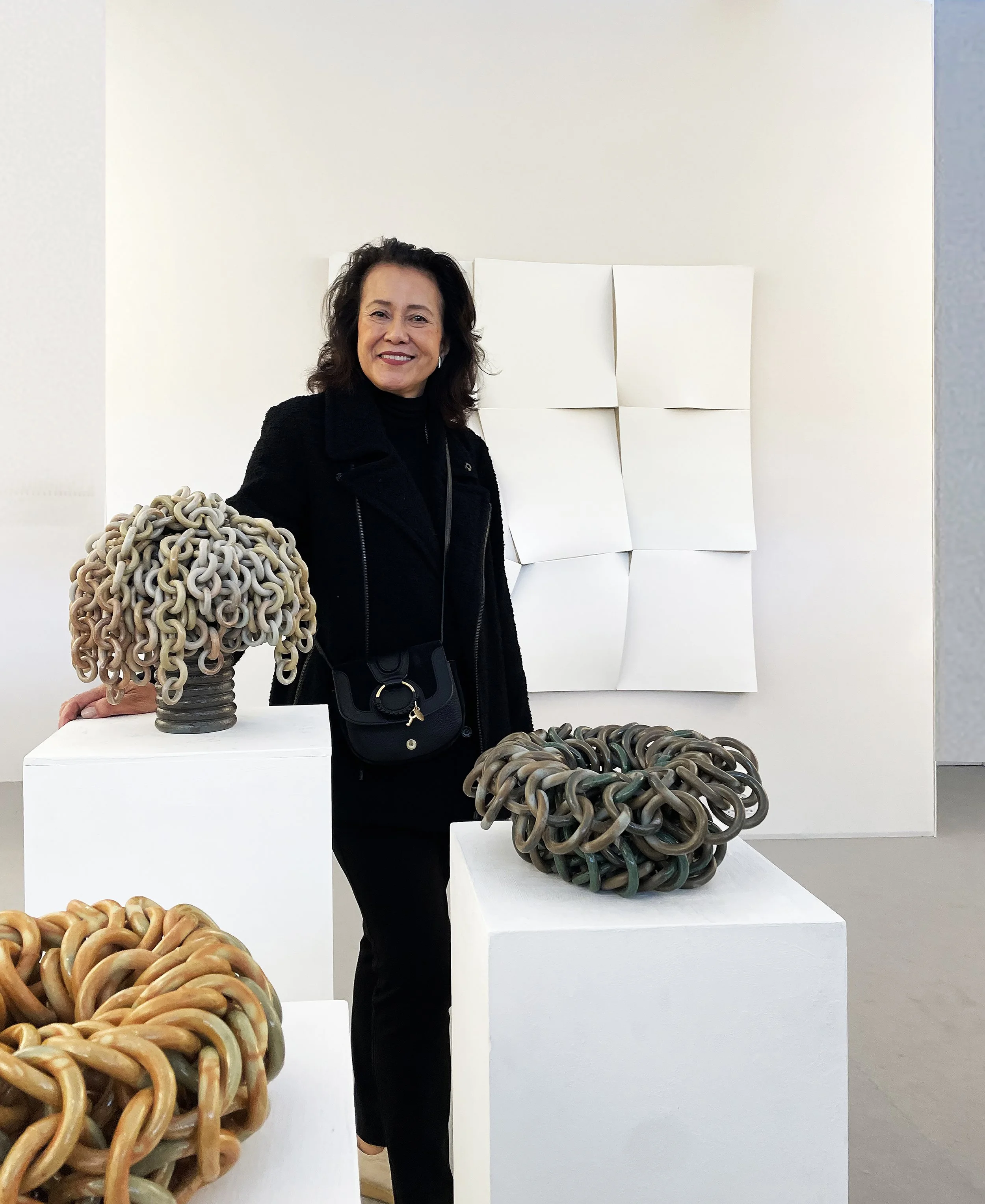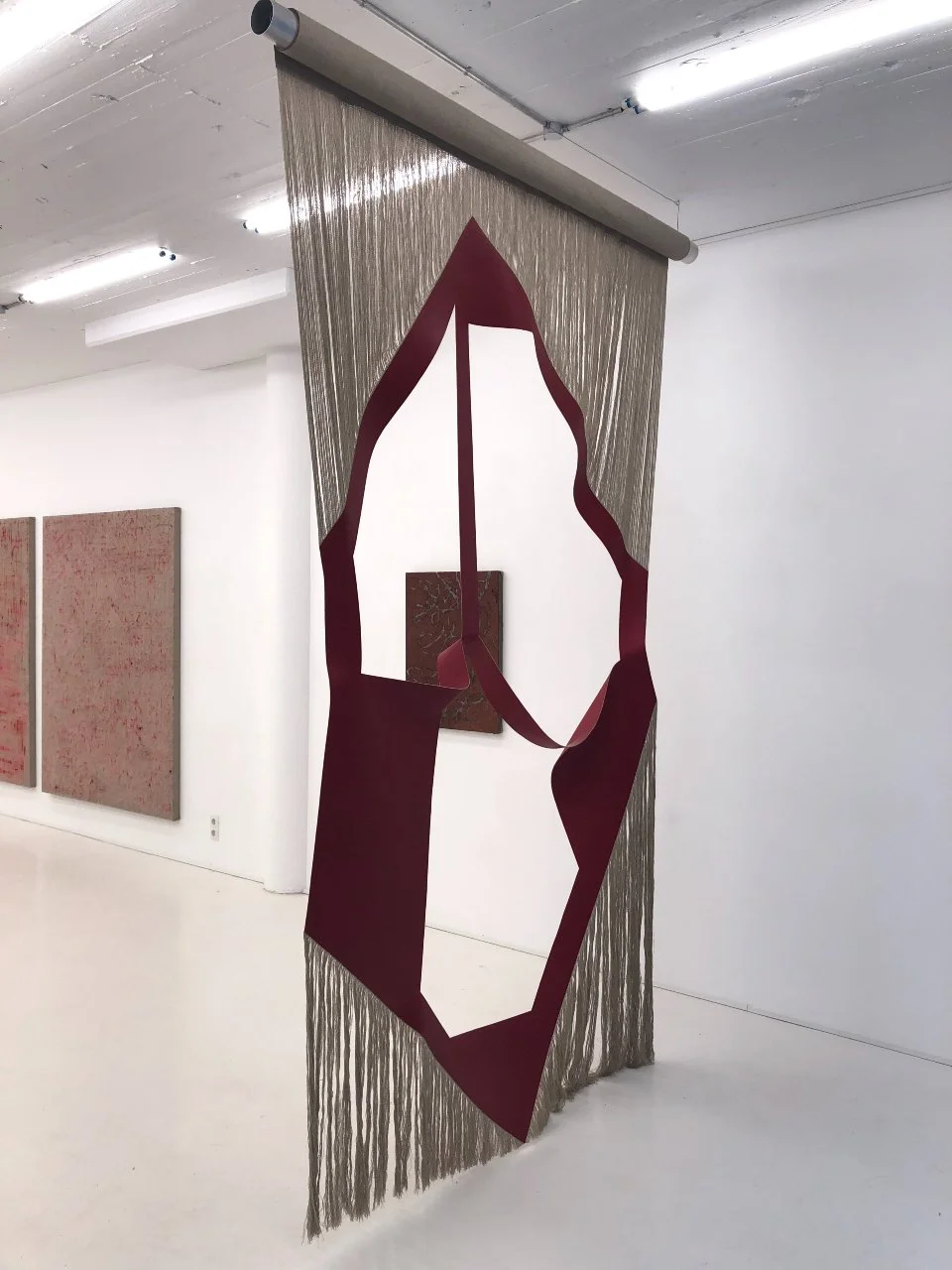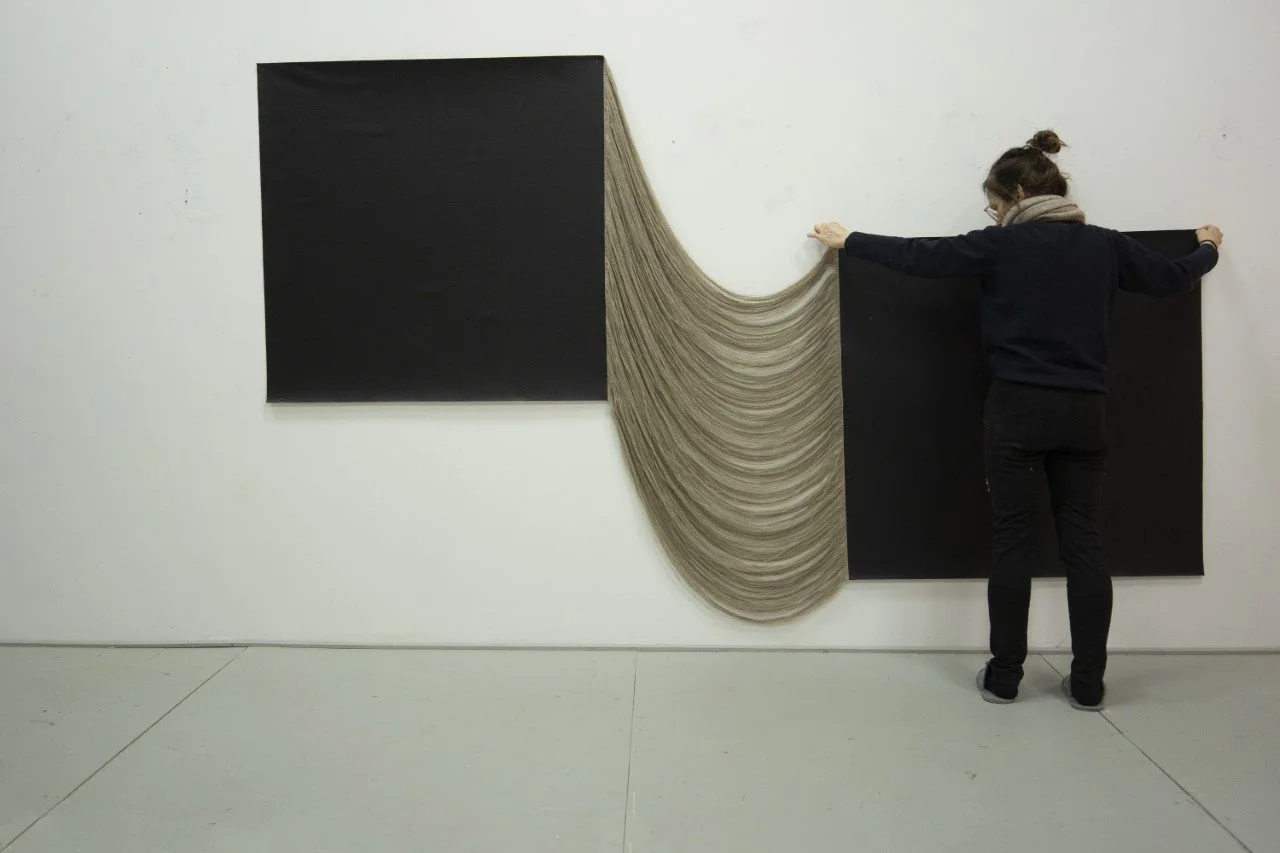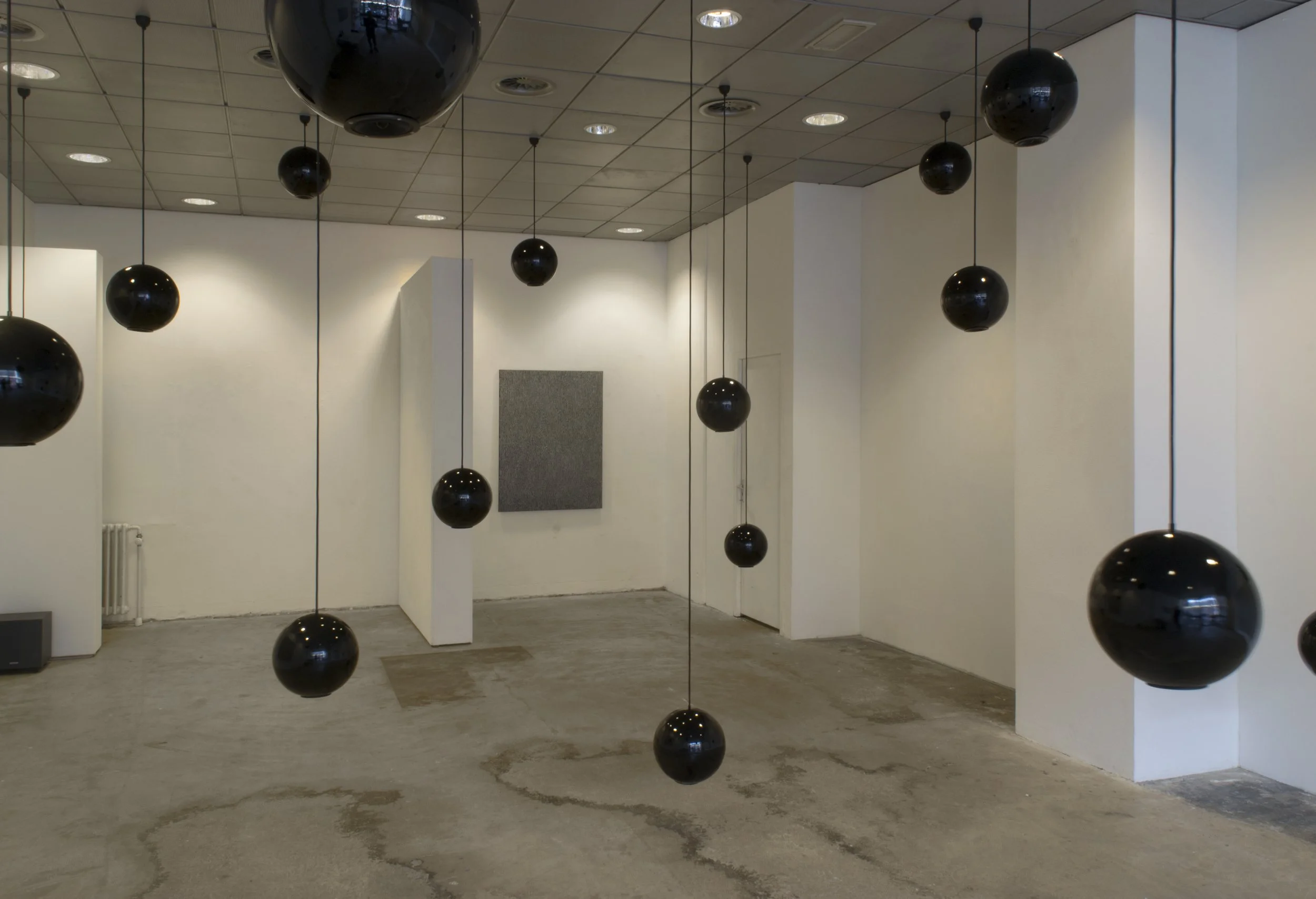VOLTA VOICES | NL = US ART
In this edition, Kamiar Maleki speaks with Clemente Brakel, founder and owner of NL=US Art.
Kamiar Maleki: Dear Clemente, tell us a bit about the history of your gallery, when did you open your space in Rotterdam?
Clemete in her gallery in Rotterdam
Clemente Brakel: I started NL=US in 2014 as an art consultancy after living in the United States for many years. I wanted to make my own cultural connections by bringing Dutch artists to the US market. Since then, the consultancy has grown into a gallery that represents both Dutch and American artists and we collaborate with artists from around the world. The main focus of NL=US Art is to establish a platform for these artists in a global environment.
Kamiar Maleki: What encourages you to support young and mid-career artists?
Clemente Brakel: It is always interesting what young artists are doing. They represent the 'now' and are keen on what is going on around them, either societal or in the still evolving world of new ways to express yourself as an artist: to see how they develop their own 'language' is exciting.
We have a number of mid-career artists with whom we work. To keep reinventing yourself as an artist is important and to see that process in both mid-career and established artists is fascinating. One of my goals at NL=US is to nurture a dialogue between the different artists that I represent.
Kamiar Maleki: Which artists do you represent in your current exhibition?
Clemente Brakel: We have the duo exhibition by Esther Jiskoot and Juliane Schmidt 'nu' going on at the gallery. The existential concept of ‘nu’ (Dutch for ‘now’) is related to the work of both artists. Written in small letters, it remains the same even after a rotation of 180 degrees: illustrating the question of the nature of time itself.
It is hardly possible to capture the now, which flutters between the past and the future. Both artists address the struggles and vulnerability of human life in their own way, using a different form of language. While Schmidt’s work focuses on the Sisyphean struggle of everyday life and the sensation of inadequacy, Jiskoot’s is more about repression and the denial and resistance that men have no hold on the world but are still hoping and trying to live without fear.
André Kruysen, Fall-Winter
Lily de Bont, 'The Canvas'
Kamiar Maleki: Which artists will you work with in Volta NYC 2023?
Artist Lily de Bont
Clemente Brakel: For the upcoming Volta NYC 2023 we will bring the artists Willem Besselink, Lily de Bont and Kirsten Hutsch.
Willem Besselink is fascinated by structures, patterns and systems that lie hidden in daily life occurrences. Interferences of these patterns are of importance to him, as this invites the viewer to relate to his work, not just visually, but also physically.
De Bont is interested in the limitations of a canvas: the deconstruction and reconstruction of the canvas. Carefully she removes the canvas from the frame. She cuts the wires systematically and accurately and by doing this affecting the connection in a canvas.
Artist Kirsten Hutsch in their studio
Hutsch is also fascinated by the boundaries of the canvas. In the past Hutsch transferred paint from one canvas to another, accurately reproducing the canvas itself as a trompe l'oeil. Lately she makes compositions with multiple canvases, stuck, or tied together by tape works.
All the artists combine a theory–an analytical idea with a tangible outcome. They embrace confinement, but at the same time try to stretch its boundaries further and further. There are still all kinds of discoveries and inventions to be made and that these depend not only on a brilliant moment, but also on analysis, perseverance, and the continuous development of new skills; craft is not a ‘dirty’ word, but a necessity for innovation to come.
Kamiar Maleki: I understand that you have a guest curator each year at your gallery. How do you choose this person what is the criteria for a show? Does it change?
Clemente Brakel: Each year we like to bring a curator in with a different perspective on art: a museum curator, an art academy professor or an artist.
People that are invested in the art world and understand what is going on in their particular field. My only criteria is that they have a unique vision.
Kamiar Maleki: In your opinion, how will the art market change in the next year?
Clemente Brakel: I believe that the art market is opening up in exciting new ways. The arrival of digital art has done a lot for the market as a whole. Digital art is an exciting new language for young artists and collectors who have grown up in a digitally native environment. I believe many more artists will include a digital component in their artworks, which allows for very exciting and interactive artworks. I’m very interested to see how this will evolve.
Marjan Laaper, 'Longing for Paradise’
Kamiar Maleki: What makes you excited to exhibit in New York?
Clemente Brakel: I’m based in New York and happy to call it home. The energy and diversity of people I’ve encountered at VOLTA New York is always in a caliber of its own.
Kamiar Maleki: Why do you believe VOLTA will have a strong future ahead and what is it that we can do to further assist galleries like yourselves?
Clemente Brakel: VOLTA has become a welcoming venue for emerging and mid-career artists. I believe this is very important. Artists are given an impressive platform to show their artworks and collectors can enter the market at a more accessible price point. Ultimately, I believe VOLTA creates meaningful connections between new collectors and new artists that will allow the art market to propel forward for decades to come.
Arnout Killian, 'Grating the Grid'
Preta Wolzak and Pieter Postma, ‘Twice as Nice and Nowhere to Hide’
NL=US will be exhibiting with VOLTA in both New York and Basel next year.
If you are interested in doing the same, please email Steven Agre at steven@voltashow.com or start your application here.








